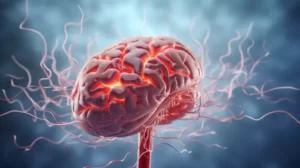Brain and memory are the most amazing mechanisms created by mother nature. But how does the memory work? And how is it that sometimes you can remember things that happened 50 years ago, but forget what happened just last week?
There are three types of memory – sensory memory, short-term memory, and long term memory. On top of that there’s an unconscious memory that works without us being aware of it – our body knows how to do basic things – walk, swallow food, breathe, and even things that scare us.
And for a good reason – our brain works hard to protect us from dangers.
But sometimes, we forget things and there are four basic reasons for that – failure to retrieve our stored memory, interference, failure to store and… our desire to forget some things.
Imagine a complex machinery such as a jet engine – it works perfectly well and serves a long time unless… a canada goose flies into it.
Then all sorts of problems start to happen and the engine quickly stops functioning, the engine loses power and has to land on a nearby Hudson River. Just like the Chesley Sullenberger accident in January of 2009.
When it comes to our memory, there are some processes that act like those canada geese that flew into the engine.
The most interesting cell in our body is the neuron. It makes up our brain and our nervous system. Neurons communicate with each other using tiny particles called neurotransmitters. Communication happens in a gap called synapse:
YOur neurons can’t just work by themselves. They need to make connections with other neurons. These connections are how the brain operates… how memories are formed, stored and retrieved.
Imagine that you’re calling your friend on the landline.
When they pick up, you can talk. But if your neighbor digs a hole in his front yard and cuts off your phone line… your communications are dead.
Same with your neurons – they need one very important nutrient to form new connections with other brain cells. It serves as a building block for communications between brain cells.
And it is so effective that scientists have now proven that this nutrient…
- Significantly improves your brain function
- Enhances your memory
- Improves your mood
- And much much more!
What is this miracle ingredient? It’s called Phosphatidylserine or PS for short. And it’s one of the most important nutrients you can give to your brain.
Ignites faster and more accurate messages
between your brain cells!
It speeds up messages through synapse and increases the level of communication between your brain cells.
The result? You can think faster, remember easier and focus better.
That’s like kicking it into a higher gear… almost like having a turbo brain…
Just imagine what that would mean to any type of mental activity…
If you’re working – your brain could work much faster. This would give you a unique perspective solution to the problem.
Sources
- Effects of phosphatidylserine in age‐associated memory impairment – Journal Neurology
- The effect of soybean-derived phosphatidylserine on cognitive performance in elderly with subjective memory complaints: a pilot study — National Library of Medicine
- Effect of phosphatidylserine on cerebral glucose metabolism in Alzheimer’s disease. Dementia. 1990;1(4):197-201.



